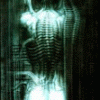(Τι να γίνει, ας αρχίσω κι εγώ τις καταρες γιατί με τις προσευχές όντως δε γίνεται τίποτα.
Καλωσήλθατε στο .aNiMe//GR!
Αν συναντήσετε οποιοδήποτε πρόβλημα κατά την εγγραφή σας ή με την πρόσβαση σας στο forum, παρακαλούμε μην διστάσετε να επικοινωνήσετε μαζί μας.

ΙΑΠΩΝΙΑ - ΣΕΙΣΜΟΣ 9 ΡΙΧΤΕΡ - ΤΣΟΥΝΑΜΙ
#586

Posted 12 April 2011 - 11:25
(Τι να γίνει, ας αρχίσω κι εγώ τις καταρες γιατί με τις προσευχές όντως δε γίνεται τίποτα.
#588

Posted 14 April 2011 - 15:21

#589

Posted 17 April 2011 - 01:19
Απλά όποιος πάει να δικαιολογήσει τη δημιουργία Πυρηνικού εργοστασιου στην Ελλάδα να τον μουντζώνετε...
Kατσε περιμενε.
Πρωτα απ'ολα, οι συγκεκριμενοι αντιδραστηρες ειναι 40 ετων.
Επειτα απ'οσο το παρακολουθω το θεμα, συνεχεια γινονται σεισμοι σε εκεινη την περιοχη, δεν εχουν ηρεμησει καθολου.
Εδω στην Ελλαδα αν δημιουργουσαμε εναν πυρηνικο αντιδραστηρα, αφενως θα ηταν τουλαχιστον 40 χρονια μπροστα τεχνολογικα, αφετερου πιο ασφαλης αφου δεν ειμαστε ΤΟΣΟ σεισμογενης περιοχη...Δεν ειναι ολες οι παραμετροι ιδιες προκειμενου να φτανουμε σε 'αναλογα' αποτελεσματα (αν την επαθαν αυτοι 1, εμεις θα την παθουμε 10 κτλ...)
#590

Posted 17 April 2011 - 02:06
#591

Posted 17 April 2011 - 14:13
Oχι οτι με 1029! συνολικους σεισμους τα πραγματα ειναι λιγοτερο τραγικα
#592

Posted 03 May 2011 - 10:22
http://center24.blogspot.com/2011/05/fukushima.html#axzz1KjDSTcnO
#593

Posted 07 May 2011 - 16:38
Αν κ διαβασα οτι πριν το σεισμο λειτουργουσαν περιπου 50 πυρηνικοι σταθμοι στην Ιαπωνια :S, ενω η πυρηνικη ενεργεια προσφερει κατι λιγοτερο απο το 30% της ηλεκτρικης ενεργειας της χωρας.
#594

Posted 07 May 2011 - 18:13
Edited by nervouslightofsunday, 13 May 2011 - 23:07.
#595

Posted 07 May 2011 - 19:07
Μπορείς να παραθέσεις την πηγή που το αναφέρει αυτό; Με ενδιαφέρει.ενω η πυρηνικη ενεργεια προσφερει κατι λιγοτερο απο το 30% της ηλεκτρικης ενεργειας της χωρας.

|| FORUM RULES || ADN RULES || FEEDBACK || IP.BOARD QUICK USER GUIDE || #anime.gr @ irc.rizon.net ||
#596

Posted 07 May 2011 - 19:15
Edited by nervouslightofsunday, 13 May 2011 - 23:07.
#597

Posted 09 May 2011 - 12:01
Μπορείς να παραθέσεις την πηγή που το αναφέρει αυτό; Με ενδιαφέρει.
Επειδη με ενδιεφερε και μενα και το ψαξα βρήκα εδω κατι "http://www.renewableenergyworld.com/rea/news/article/2011/04/solar-frontier-opens-largest-thin-film-plant-in-the-world
Μου κανει εντύπωση, τόσοι αντιδραστηρες και τόσο ρίσκο για μόνο 30%;;Japan’s 54 nuclear reactors generate 30% of the country’s current electricity. Up to 50% of Japan’s electricity could come from nuclear by 2030, according to Reuters. With little acreage for solar farms, most of the installed PV capacity in Japan – and Solar Frontier’s domestic sales – comes from residential systems.
Η Γαλλία εχει μόλις λιγο περισσότερους αντιδραστηρες (58 ) και καλύπτει με αυτούς σχεδόν το 80% της συνολικής ηλεκτρικής ενέργειας.
#598

Posted 09 May 2011 - 12:31
Edited by nervouslightofsunday, 13 May 2011 - 23:07.
#599

Posted 09 May 2011 - 13:24
Television viewers around the world witnessed massive hydrogen explosions that devastated reactor buildings and spent fuel pools. The result was large-scale fuel damage, partial meltdown in at least three reactors, and broken fuel elements in what remains of unit four’s spent fuel pool. Helpless operators tried desperately to cool reactors and spent fuel with fire hoses and cement trucks, but shortterm responses turned into long-term nightmares. The injection of large amounts of seawater into the reactor cores led to the accumulation of large volumes of salt at the bottom of the pressure vessels. The salt crystallizes on hot surfaces to form a hard, insulating layer that prevents the fuel from being cooled. Salt crystals will likely also hinder the operation of valves.
At the same time, the huge quantities of water that were injected and sprayed onto the reactors—an estimated 100 cubic meters per hour—became severely contaminated and must be collected somehow. The problem was so acute that the operator decided to discharge water with “lower” contamination levels into the sea to provide space for more highly affected water. In an unprecedented confrontation broadcasted by Japanese television, the Chairman of the National Fisheries Union told the chairman of Fukushima owner TEPCO: “You’ve trampled on the nation-wide efforts of fishery operators.... Despite our strong demand to cease the flow of contaminated water into the ocean as soon as possible, just a few hours later [more] water was dumped without consulting us—you pushed through. We were really ignored. We wonder if you had ever heard us. This is an affront to us and truly an unforgivable act.”
After four weeks of uncertainty and a constantly worsening outlook, the nerves of some of Japan’s seemingly endlessly patient people are raw. Tens of thousands of evacuees are waiting for clear information about when—if ever—they can return home. Dogs and cows that were left behind wander along empty roads. Measurements in schools as far as 40 kilometers from the Fukushima plant show extremely high levels of radiation well outside the 20-kilometer (later 30-kilometer) evacuation zone. People don’t know what they can safely eat or drink.
In total, 14 of 54 reactors in Japan remain off line as a consequence of the Fukushima disaster. Units 1–4 of the Fukushima-I plant are condemned, and the likelihood for units 5 and 6 to be restarted is virtually zero. Japanese Chief Cabinet Secretary Yukio Edano said the government will review its nuclear power policy once the situation at the crippled plant is under control. “Once this is resolved, we need to carry out a thorough review and examination of this major policy decision.” In a late March 2011 survey by Kyodo news agency, more than 58 percent of Japanese respondents disapproved of how the government was dealing with the crisis.
Tokyo Electric Power Co. (TEPCO), the operator of the Fukushima plant, is suffering badly, and there are suggestions that the company will have to be nationalized to avoid bankruptcy. Toward the end of March 2011, TEPCO was forced to secure $25 billion from three of Japan’s largest banks for emergency funding; even so, it will likely need to ask the government for further financial support. The company’s share value has fallen dramatically and had lost more than half of its pre-Fukushima value as of late March 2011.
TEPCO halted construction at its Higashidori plant and suspended plans for three more units. Two other Japanese utilities have also taken action: Electric Power Development Co. halted construction of the Oma plant, and Chubu Electric postponed a new-build project. On April 6, 2011, Ikuhiro Hattori, chairman of the National Federation of Fisheries Cooperative Associations, met with TEPCO Chairman Tsunehisa Katsumata and declared: “You’ve trampled on the nationwide efforts of fishery operators We want your company to make clear your responsibility in and countermeasures for bringing about such a serious accident as this, and that is why I have come.” The fisheries union chairman announced that his organization will request the closure of all nuclear power plants in Japan.
Japan operates 54 reactors that produce 29.2 percent of the country’s electricity (down from a maximum of 35.9 percent in 1998 ). In 1998, nuclear energy had produced almost 36 percent of Japan’s electricity but was subsequently hit by various quality-control scandals and a major earthquake. The Japanese reactors are with 71 percent on the lower end of the lifetime load factors in the world and reached only 66 percent in 2009. Besides serious exceptional events, Japanese nuclear plants operate on much shorter operating cycles compared to other countries—13 months versus over 18 months in the United States, for example—and have much longer outage times—98 days versus less than 44 days in the United States or South Korea.
On 16 July 2007, a 6.8 magnitude earthquake hit the region that houses TEPCO’s Kashiwasaki-kariwa nuclear plant. With seven units, this plant is the largest single nuclear power station in the world. The reactors were shut down and only four units (1, 5, 6, and 7) had restarted as of March 2011, with the remaining three units still closed.
On 6 May 2010, the controversial 250 MW Monju fast-breeder reactor was restarted after more than 14 years of shutdown following a sodium leak and subsequent fire. On 26 August 2010, a three-ton relay device used for fuel loading dropped into the reactor vessel. So far, all attempts to recover the device have failed. The situation is complex because the fuel in the vessel is cooled by sodium, which has to be kept at a certain temperature and away from contact with air that would ignite the sodium. Full restart is now scheduled for 2014 or later.
Officially, two reactors are listed as under construction in Japan. After several years of delays, the Ohma building finally started in May 2010. The planned beginning of commercial operation for the Shimane-3 reactor has been delayed by three months to March 2012 following the discovery of significant faults in control-rod drive mechanisms. Shimane-1 and -2 made headlines in 2010 when it was revealed that inspections were not properly implemented. The operator acknowledged 123 cases where checks were missed, including when parts were not replaced as scheduled. In a stinging editorial, Japan’s leading newspaper Asahi Shimbun commented: “If nuclear power plants are not run safely, they cannot be considered part of the solution for global warming. Instead, they will become yet another, serious environmental hazard.” Further construction plans are vague and have been scaled back several times.
The plutonium separation plant in Rokkasho-mura started active testing in March 2006. As of early 2011 and after the 18th postponement due to countless technical problems (in particular with the vitrification facility), the reprocessing facility with a nominal annual throughput of 800 tons is intended to “start-up” by 2012. The project is now 15 years behind schedule. Past accidents and scandals in Japan’s nuclear industry have also delayed the use of MOX (uraniumplutonium mixed oxide) fuel by a decade. MOX fuel was introduced into a Japanese reactor (Genkai-3) for the first time in 2009. The country has a significant stock of plutonium, about 46 tons, of which more than 36 tons are stored in France and the United Kingdom. The construction of Japan’s own MOX fuel fabrication facility, currently at least 10 years behind schedule, officially began in October 2010.

|| FORUM RULES || ADN RULES || FEEDBACK || IP.BOARD QUICK USER GUIDE || #anime.gr @ irc.rizon.net ||
#600

Posted 09 May 2011 - 17:04
Edited by nervouslightofsunday, 13 May 2011 - 23:07.

















